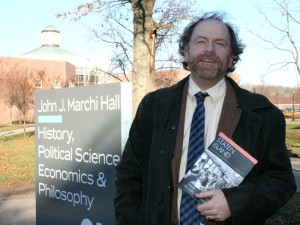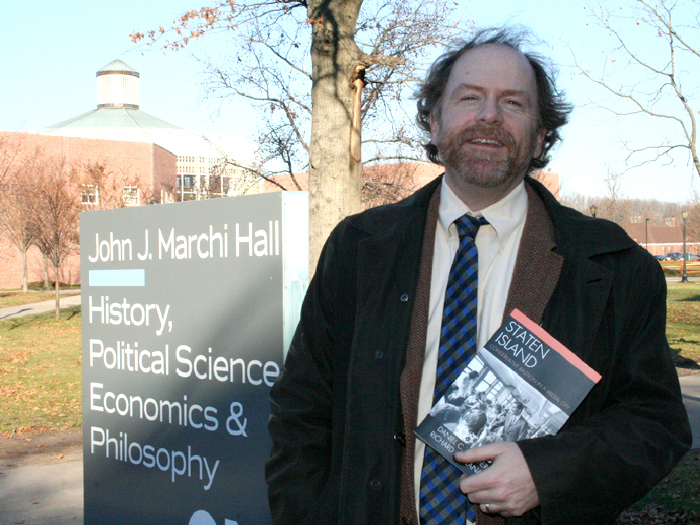
Prof. Richard Flanagan's new book discusses the unique qualities of Staten Island politics, in comparison to the other four boroughs.
CSI Associate Professor of Political Science Richard Flanagan’s newest book, Staten Island: Conservative Bastion in a Liberal City chronicles the events that have shaped Staten Island’s history.
“Staten Island is one of the rare communities in the United States where local political campaigns can be very competitive and hard-fought,” Flanagan remarked. “There is nothing sleepy about Staten Island’s politics.”
Published by University Press of America and co-authored by the late Daniel Kramer, Flanagan analyzes the politics behind events that have shaped the borough, such as the opening of the Verrazano Bridge, the battle over the South Richmond Plan, the secession movement, the closure of the Fresh Kills Landfill, and how Staten Islanders voters provided the critical margin needed to elect Republicans Rudolph Giuliani and Michael Bloomberg Mayor of New York. The book describes Staten Island as “New York City’s smallest yet fastest growing borough: a conservative, suburban community of nearly a half a million on the fringe of the nation’s most liberal, global city” and emphasizes the borough’s important role in shaping the politics of the region, as well as the nation.
“Although many New Yorkers consider Staten Island to be out touch politically and culturally, Staten Island is very much in tune with the rest of the country,” said Flanagan. “Much more so than Manhattan is.”
The book chronicles Staten Island’s modern political history, warts and all, including Guy Molinari’s fights and feuds, the GOP’s deep schism after the resignation of Congressman Vito Fossella following revelations that he had fathered a child outside of his marriage, and the Democratic Party’s frustrations to win elections even as they maintain a voter registration lead over the Republicans in the borough.
“There have been a lot of personal scandals here,” said Flanagan, “a lot of blushing.”
One important wellspring of Staten Island’s conservatism is traced to the opening of theVerrazano Bridge in 1964 when Brooklynites, fleeing the crime and overcrowding of their native borough, began voting for Republicans.
“The story of Staten Island is that of a community trying to sustain middle-class neighborhoods in a global city too often defined by opulence and poverty,” said Flanagan.
Professor Flanagan joined the College in 1999 after working for several years as a teacher and curriculum developer at a not-for-profit that prepared students from historically underrepresented groups for opportunities in higher education. He teaches courses in U.S. politics, public policy, and urban studies. Dr. Flanagan has supervised more than 250 students in his role as faculty liaison to CUNY’s Edward T. Rogowsky Internship Program in Government and Public Affairs. He has lectured in U.S. government and politics for the Fusion Arts Exchange program run by the U.S. Department of State’s Bureau of Educational and Cultural Affairs. Dr. Flanagan’s previous book, Mayors and the Challenge of Urban Leadership (2004) examines 12 case studies of mayoral leadership in seven cities, from the New Deal era to the beginning of the 21st century.
















